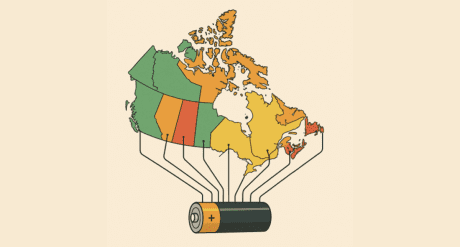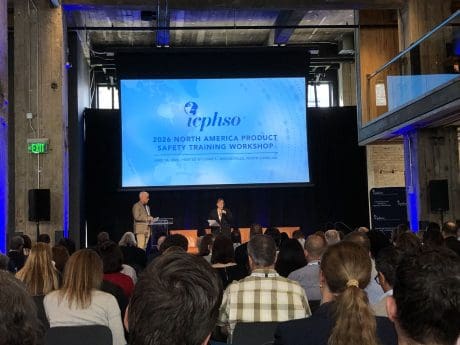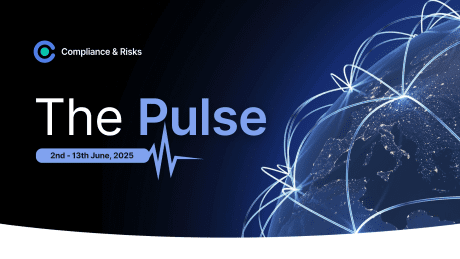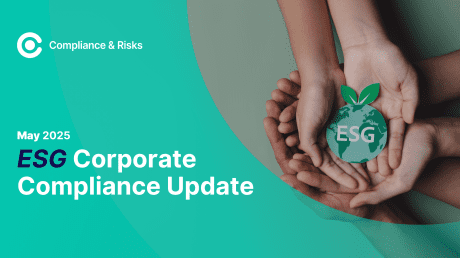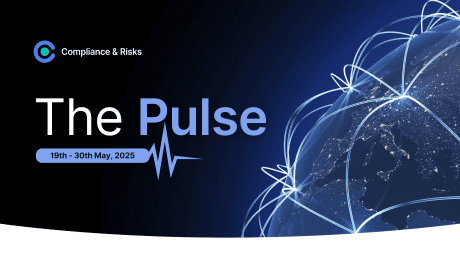
The Weekly Pulse: 3rd Oct – 7th Oct
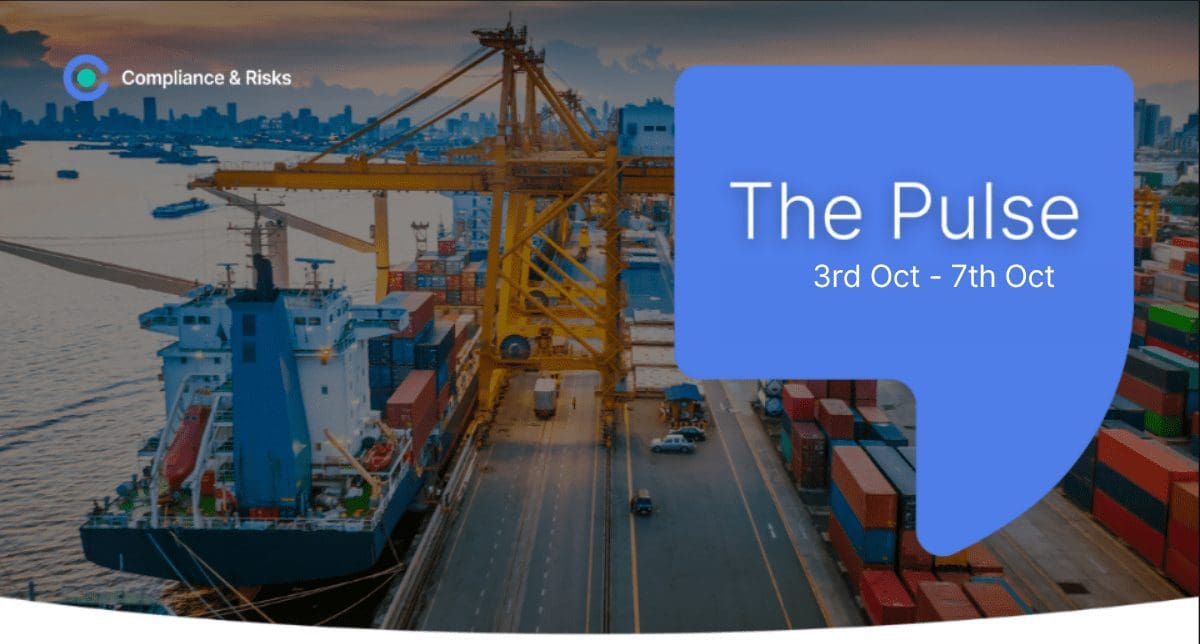
What’s HOT in our Regulatory World at the moment?
What are our clients looking at?
This week’s trending sources in C2P
- California (USA): Registration of Perfluoroalkyl and Polyfluoroalkyl Substances (PFAS) in Products and Components, Assembly Bill 2247 Vetoed, 2022
- EU: Liability for Defective Products, Draft Directive, September 2022
- Compliance and Risks: Demonstrate Compliance to Unlock Global Market Access, Webinar Presentation, September 2022
What is our Content Team talking about?
Vietnam planning energy efficiency labelling regulations for induction cookers, infrared cookers and air conditioners by 2025 – Joyce Costello
According to the Deputy Chief of the Office of the Steering Committee for Energy Saving, Ministry of Industry and Trade, Vietnam plans to introduce additional products to the performance management program requiring energy labelling.
It will be recalled that Vietnam’s energy labelling program is a state management measure to promote the use of high-performance equipment and gradually phase out outdated technology products, having its legal basis in Chapter IX- Management of energy-using vehicles and equipment of the Law on Economical and Efficient Use of Energy.
The energy labelling program mandates enterprises manufacturing and trading vehicles and equipment to be transparent about the energy efficiency of energy-using products in the production and business stages in the market.
At the same time, outdated, low-energy-efficient vehicles and equipment below the minimum level are banned from production and trading in the market.
Vietnam’s mandatory energy label is divided into 2 types of labels according to the regulations of the Prime Minister, namely the recognisable energy label, which indicates the minimum energy consumption level that the enterprise must achieve for products to circulate in the market, and the comparative energy label, represented by stars, which helps consumers to distinguish high-performance products.
With regard to implementation of the energy labelling roadmap in the coming period, the Deputy stated that the current system of standards and energy labelling infrastructure is under review, and about 6 products are expected to be added to the energy performance management program, labelling program as well as the minimum energy efficiency program (voluntary) in the near future.
The major target products in this period are induction cookers, infrared cookers, VRV air conditioners (multi-split type air conditioners) and LED bulbs.
It is expected that by 2025, these new energy efficiency product regulations will be published.
What are our Knowledge Partners talking about?
Radical Reform of EU Product Liability Laws: Long-awaited Proposals Published – Cooley
Last week, the European Commission published its long-awaited proposal to revise the EU’s Product Liability Directive (85/374/EEC) (PLD).
The PLD establishes a framework for strict liability for defective products across the EU, meaning claimants do not need to establish fault to claim successfully.
As a result, it’s the preferred way of making product liability claims in Europe. The revision is a significant development as the PLD dates back to 1985 and has not been amended for over 20 years.
From a practical perspective, the revision matters because it is clearly intended to extend the scope of claims that can be brought, expand the range of damages that can be recovered and make it easier for consumers to prove their case.
Alongside other reforms, e.g., upcoming rules on representative actions, we are now looking at the coming to pass of the fundamental shift in the European risk landscape for product manufacturers and suppliers that we have been predicting for a few years now.
Summary:
Here’s a quick overview of what we consider to be the key proposed reforms:
- Broader interpretation of what a “product” is. Expanding the definition of a “product” to include software along with certain related digital services.
- Broader concept of “defect” including:
- cybersecurity risks, connectivity risks, software updates (or lack of updates). We consider that the proposal to include lack of software updates as a basis for defect is particularly problematic.
- Relevant factors for defect would explicitly include:
- compliance with EU product safety rules, with the potential for the burden of proof to be eased for claimants where the product does not comply with safety requirements intended to protect against the risk of damage that occurred; and
- product recall, though this would not have knock-on effects for the burden of proof.
- More available damages. Expanding the scope of damages to include data loss and certain psychological harm
- No threshold for claims. Amendments to make it easier for consumers to bring claims, for example by removing the minimum threshold of €500 for damage to property, introducing broad-ranging powers for courts to order that a defendant disclose certain technical documents upon the claimant establishing a plausible case, and extending the long-stop provision to 15 years in certain cases
- New liabilities for online marketplaces. Strict liability could be imposed on fulfilment service providers or online marketplaces in certain circumstances
A 12 month transition period is proposed, with the new rules applying to products placed on the market after that date. In practice this means the new provisions could apply from 2024 – 2025.
The proposed reforms sit alongside parallel policy initiatives – such as upcoming laws on representative actions, proposals on artificial intelligence, circular economy activities and cybersecurity.
Together, these reforms are set to significantly change the liability risks for product manufacturers and suppliers.
For example, the combination of the removal of the threshold for property damage claims under the PLD and the introduction of new class action mechanisms under the laws on representative actions makes bringing large numbers of small claims a much more attractive prospect for claimant organisations.
In More Detail:
What Is It?
The PLD establishes a strict liability (i.e. no fault) regime to enable claimants to seek compensation for defective products across the EU.
To claim under the current rules, a claimant does not need to prove fault on the part of the “producer” (normally, the product manufacturer or importer). Instead, they merely need to prove that:
- the product was defective;
- they suffered damage; and
- there was a causal link between the defect and the damage the claimant suffered.
The strict liability regime under the PLD sits alongside fault-based claims for defective products such as tort (i.e. negligence) or breach of contract under the national laws of member states.
The PLD has been virtually unchanged for more than 35 years (with only minor amendments in 1999), and the European Commission has concluded that updates are now needed in order to protect consumers, especially considering new risks and challenges created by connected products, artificial intelligence, and the increasing importance of data security, circular economy activities, as well as e-commerce and other new marketing methods.
The Commission published its legislative proposal to revise the PLD on 28 September 2022.
Whilst some of the most important aspects of the proposed reforms focus on adapting the liability rules to deal with new technologies, circular economy activities and e-commerce, other reforms will affect all product sectors.
What Products Are In Scope?
All products placed on the market or put into service in the course of a commercial activity.
The proposed reforms would expand the scope of what is considered as a “product” to expressly include digital manufacturing files (e.g. for 3D printers), software and AI-systems.
Software would be in scope whether embedded in a device or placed on the market as a digital product it its own right and irrespective of the mode of supply and usage (e.g. stored on a device or accessed through cloud technologies.) AI-systems would also be within scope.
There is also a separate proposal for another liability regime for AI.
Services generally remain out of scope, however certain “related services” will be in scope.
These are defined as digital services integrated into, or inter-connected with a product in such a way that the absence of the service would prevent the product from performing one or more of its functions.
An example given of a related service is continuous supply of traffic data to a navigation system.
Why Does It Matter?
The proposed reforms to the PLD are wide-ranging. Headline changes include:
- Introducing strict liability for defects resulting from cybersecurity risks, connectivity risks, software updates (or lack of updates). There are limited exceptions for software updates where it can be shown it was beyond a manufacturer’s control e.g. due to the user not installing the update.
- Expansion of the scope of recoverable damages from personal injury, death and damage to personal property to also include loss or corruption of data and medically recognised harm to psychological health. Policy proposals to also include damages for privacy infringements didn’t make their way into the final proposal.
- Removal of the minimum threshold of €500 for damage to property and an expansion of the rules so that claims could be made for damage to property that is used for mixed professional and private purposes. Damage to the product itself and property used exclusively for professional purposes would remain out of scope. The optional cap of not less than EUR 70 million for damage resulting from death or personal injury and caused by identical products (implemented by some member states) has also been removed.
- The non-exhaustive list of factors to take into account in assessing defect has been expanded to include product safety requirements (including safety-relevant cybersecurity requirements), interventions by economic operators or regulators (such as product recalls), foreseeable misuse and self-learning abilities, in addition to other things. Where a claimant establishes that a product does not comply with mandatory safety requirements under EU or national laws intended to protect against the risk of damage that has occurred, the defectiveness of the product would be presumed. However, in relation to product recalls, helpfully the recitals clarify that such interventions should not of themselves create a presumption of defectiveness.
- To make it easier for consumers to bring claims, the reforms would harmonise rules on when a court can order a manufacturer to disclose certain technical information upon the claimant establishing a plausible case, which can lead to a presumption of defectiveness where the manufacturer fails to do so. Certain safeguards would be included e.g. to limit access to what is necessary and proportionate and protections for trade secrets.
- The burden of proof could be eased by the Court in certain circumstances such as for scientific or technically complex cases where it would be difficulty for the victim to prove liability (e.g. cases involving pharmaceuticals or AI as highlighted in the Commission’s Q&A document) or an obvious malfunction (the example of a glass bottle that explodes in the course of normal use is given in the recitals).
- New liability for online marketplaces including imposing strict liability on a fulfilment service provider where there is no manufacturer, importer or authorised representative established in the EU. An online marketplace may be held strictly liable where it fails to identify who supplied it with the product within one month upon request in certain cases.
- The time limit for bringing claims remains 3 years (from the earlier of either the day on which the claimant becomes aware, or should reasonably have become aware, of the damage, the defect and the identity of the relevant economic operator who is liable), with a 10 year long-stop provision after which the right to bring claims would be extinguished (starting from the date the actual product which caused the damage was placed on the market). There is new provision for this longstop to be extended to 15 years where the symptoms of personal injury are slow to emerge.
- Terminology would be aligned with existing EU product rules under the New Legislative Framework e.g. consistent definition of a “manufacturer” rather than a “producer”, “placing on the market” rather than “put into circulation”.
How Does This Affect Me?
The proposed reforms sit alongside parallel policy initiatives involving representative actions, circular economy activities and cybersecurity – together these reforms are set to significantly change the liability risks for all product manufacturers and suppliers who place products on the EU market.
In particular, upcoming EU representative actions laws set to apply from June 2023 that will allow consumer groups to launch class actions need to be kept in mind in the context of the proposed PLD reforms.
The new representative action laws represent a major overhaul of the European class actions landscape – introducing mechanisms for group litigation in every one of the EU’s 27 Member States, alongside a new cross-border mechanism for bringing class actions in multiple EU countries at the same time.
These new rules are specifically designed to enable groups of consumers, through representative agencies, to bring claims against companies on a large scale.
Consumer groups can seek injunctions, damages and/or redress for breach of a wide range of EU laws – in total, 66 pieces of EU legislation covering product liability, alongside consumer rights, product safety, medical devices and more.
When Will The New Rules Apply?
On our calculation, the revised PLD could enter into force around late 2023 – 2024. There is a 12 month transition period – meaning the new rules would apply to claims brought under the updated strict liability framework for products placed on the market after around 2024 – 2025.
The current rules would continue to apply to claims for products placed on the market before this date.
In terms of next steps, the draft legislation is undergoing an 8-week feedback period which is open to industry and the public that currently closes on 30 November 2022.
However, this date could be extended by a few days over the next week or so (it auto extends one day at a time until the proposal is available in all EU languages) – you can check here.
Feedback received during this process is usually summarised by the Commission and presented to the European Council and European Parliament to consider as they review the proposal.
Feedback will also be public on the Commission’s webpage for this proposal.
The legislative proposal will then make its way through the ordinary legislative process involving the Council and Parliament each separately reviewing the proposal before meeting in trilogue negotiations with the Commission.
As a Directive, member states will be required to transpose the revised PLD into their national rules.
Under the current legislative proposal, member states would need to do this within 12 months after the revised laws enter into force.
Where Can I Find Out More?
- A copy of the European Commission’s legislative proposal to revised the PLD can be found here
- Questions and Answers document issued by the Commission here
- Press release here
What are our Clients asking about?
Could you tell me whether packaging for medical devices is exempt from the Spanish Plastics Packaging Tax ? Answer by Denise McDermott
The Spanish law on Waste and Contaminated Soils for a Circular Economy (Law No. 7/2022) aims to prevent and reduce the generation of waste and the adverse impacts of its generation and management and can be assessed here
The Law applies to All types of waste, taking into account the exclusions set out in paragraphs 2, 3 and 4 and appears to contain conditions for exemption for products to be used to package medicines, health products, formula for infants, or hazardous healthcare waste. Refer to Article 75. Exemptions can be found here
As per the text, the tax base will be made up of the amount of non-recycled plastic, expressed in kilograms, contained in the products subject to the tax. The tax rate is 0.45 euros per kilogram.
Importantly, certain packaging for example, “paints, inks, lacquers and adhesives designed to be incorporated into products intended to have the function of containing, protecting, handling or delivering goods or products” will not be subject to the tax.
Furthermore, small imports or intra-community acquisitions of packaging will not be taxed either, as they are exempt.
Also, those whose total amount of non-recycled plastic contained in the containers subject to import or intra-community acquisition will not exceed 5 kilograms will have such consideration.
Likewise, it has been considered appropriate to exempt from the tax those products that are intended to provide the function of containment, protection, handling, distribution and presentation of medicines, health products, food for special medical uses”
Stay Updated On Global Regulations
This information is based on the most viewed regulations on C2P this month.
Sign up to get the latest compliance news delivered to your inbox weekly, for free!
The Pulse – Weekly Newsletter
Get the latest compliance news delivered straight to your inbox
